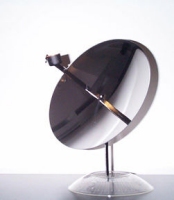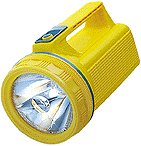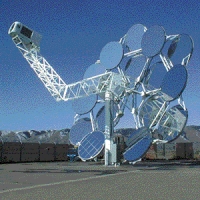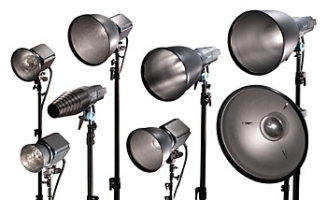
One of the "real world" applications of parabolas involves the concept of a 3D parabolic reflector in which a parabola is revolved about its axis (the line segment joining the vertex and focus). The shape of car headlights, mirrors in reflecting telescopes, and television and radio antennae (such as the one below) all utilize this property.

Antenna of a Radio Telescope
 
All incoming rays parallel to the axis of the parabola are reflected through the focus.
Flashlights & Headlights

In terms of a car headlight, this property is used to reflect the light rays emanating from the focus of the parabola (where the actual light bulb is located) in parallel rays.
Parabolic Reflector
 
Parabolic reflectors work in much the same way as flashlights and antennas.
Path of a Projectile

Galileo Galilei found that all objects thrown form a parabolic path, no matter what. He deduced this by the simple observation of watching objects being thrown. Galileo is responsible for the modern concepts of velocity and acceleration to explain projectile motion that is studied today:
A projectile which is carried by a uniform horizontal motion compounded with a naturally accelerated vertical motion describes a path which is a semi-parabola.

go to

or go to previous page
| 


